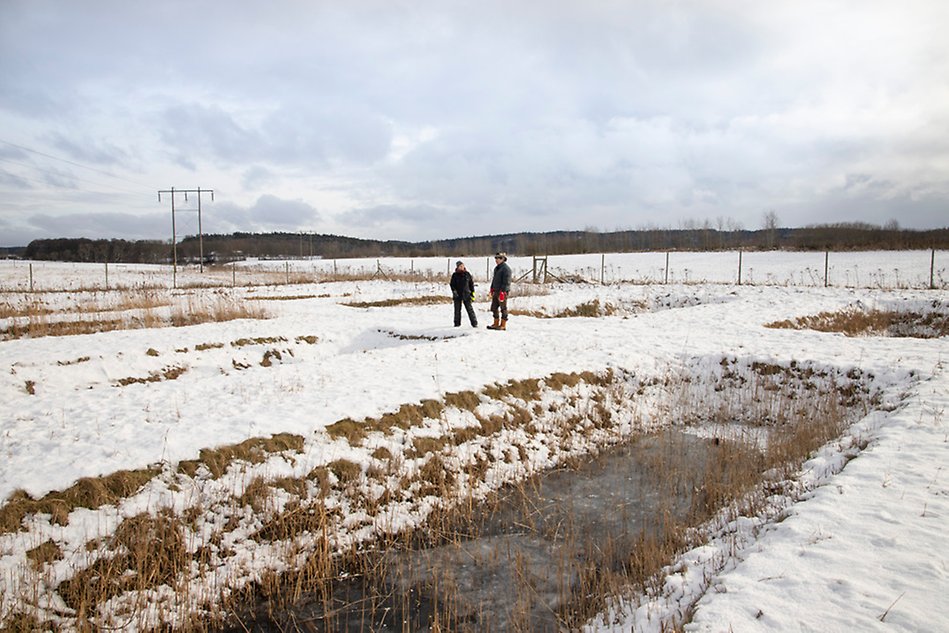Challenges and success with wetlands of the future
Should wetlands be designed to support specific species? What happens to mercury when peatland forests are rewetted? These questions were addressed during the workshop held as part of the Swedish Environmental Protection Agency’s research initiative ’Ecosystem Services of Wetlands’.
”Right wetland should be in the right place!”
Antonia Liess, Professor of Environmental Science
On December 8, researchers from Halmstad University, Stockholm University, the Swedish University of Agricultural Sciences, and Hushållningssällskapet presented new advice on wetland construction and restoration to stakeholders in the field. The focus was on creating multifunctional wetland landscapes, considering the specific functions of each wetland based on their location and how to optimise their benefits.

Med sina kollegor studerar Antonia Liess, professor i miljövetenskap, förutsättningar för multifunktionella våtmarkslandskap.
“The event’s purpose was to communicate research results from the Swedish Environmental Protection Agency’s wetland initiative to stakeholders in municipalities, county administrative boards, water councils and the environmental consulting sector. Researchers presented how to best implement a multifunctional wetland landscape – the right wetland should be in the right place!” says Antonia Liess, Professor of Environmental Science, who spoke about wetlands designed for water retention and nitrogen removal during the workshop.
Wetlands designed for different purposes
The day included meaningful discussions, tips, and insights into various successful projects. For example, a project in Skåne was mentioned where wetlands have been created to benefit specific endangered frog species. Another topic discussed was mercury leakage from the forest soils as peat wetlands are rewetted, and why it is therefore important to measure and follow up on mercury leakage after rewetting.
Antonia Liess elaborates more on wetlands designed to both buffer water flows and remove nitrogen: “If a wetland is to function well for nitrogen removal, it should be subjected to high nitrogen loading and be designed to have a long, narrow shape with maximum distance between in- and outlet. If a wetland is to function well for water retention, it should be emptied before high-flow periods.”
All researchers pointed out the importance –and lack– of follow-up studies and long-term monitoring programmes after wetland construction in restoration projects.

Organisers, participants, and speakers were happy with the day, which offered interesting discussions.
Samtliga forskare som deltog i workshoppen framhöll vikten –och bristen– av uppföljningsstudier och långsiktiga övervakningsprogram efter konstruktionen av restaureringsprojekt för våtmarker.
Text: Anna-Frida Agardson
Pictures: Dan Bergmark Ida Fridvall
Organisers
Swedish University of Agricultural Sciences, Hushållningssällskapet, Halmstad University and the Swedish Environmental Protection Agency.

